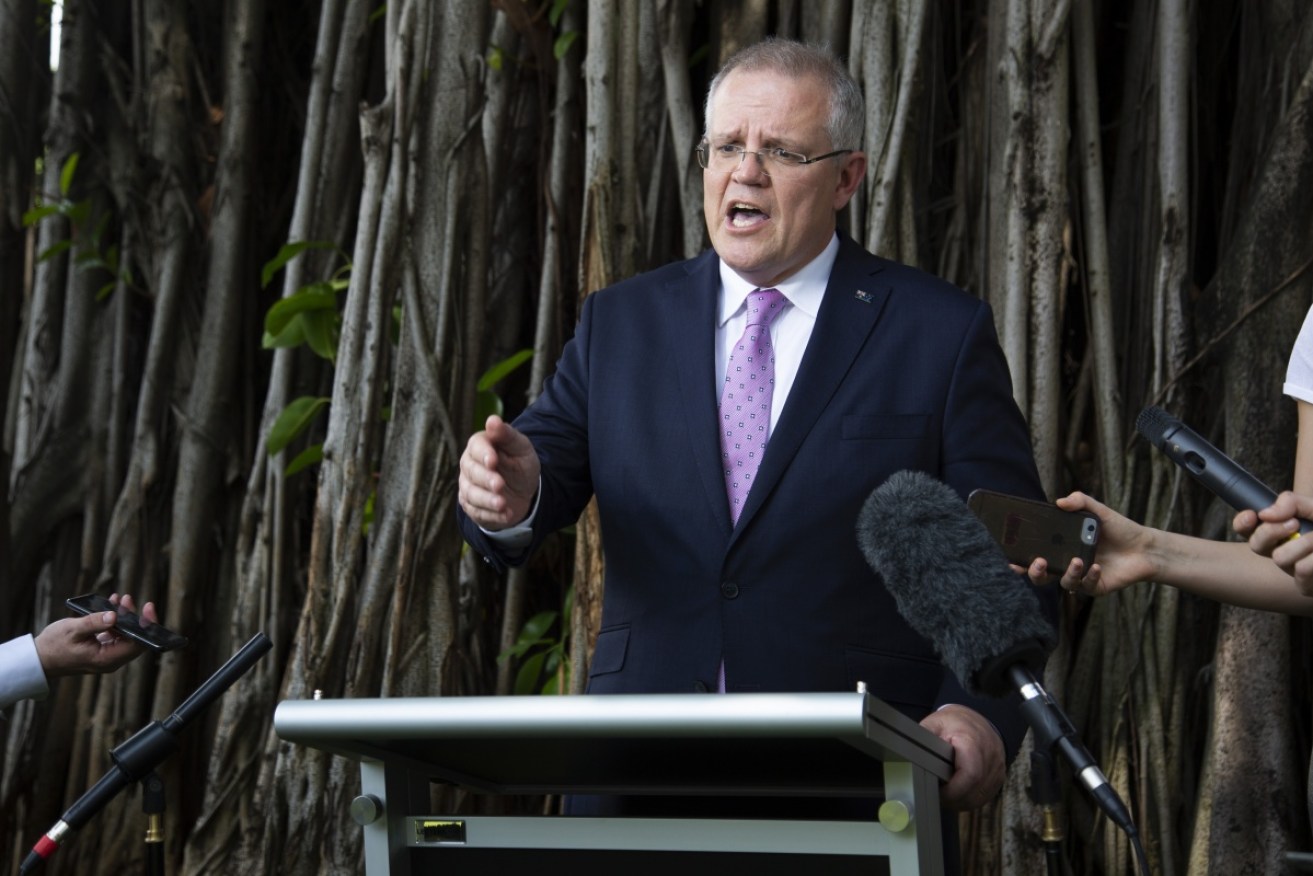Bad news for new PM as consumer wallets shut


Prime Minister Scott Morrison speaks to media during his trip to Indonesia. Photo: Getty
Retail sales were flat in July, housing prices eased a bit further last month and new vehicles sales are continuing to fall – the new financial year is not off to a good start.
And that bodes ill for a Prime Minister who, as treasurer, promised robust economic growth in 2018-19.
We suggested a month ago that June’s retail sales growth looked like being temporary as July new vehicle sales dropped nearly 8 per cent on the July 2017 figure. The car yard figures had the story right.
After growth of 0.4 per cent in May and June, retail sales in July scored zero movement, according to the Australian Bureau of Statistics, adjusted for seasonality.
The word around the car yards is that August sales have gone the way of July – down. The Federated Chamber of Automotive Industries’ official numbers are out on Wednesday and should attract more than the usual amount of attention.
A contributing factor to vehicle and retail sales is what falling housing prices does to consumer confidence, given that roughly two-thirds of us either own or are in the process of buying a home. And Monday’s CoreLogic count is that prices eased a little more last month.
Average capital city dwelling prices fell 0.4 per cent in August to be down 2.9 per cent from a year ago. That’s not much in the general scheme of things, but it was the 10th consecutive monthly fall with expectations for further easing to come. And the falls have been steeper in our two main cities – Sydney is off 5.6 per cent from its peak last year and Melbourne 3.5 per cent.
AMP chief economist Shane Oliver neatly summarised the causes and outlook thus: “Tighter bank lending standards, poor affordability, rising unit supply, falling price growth expectations and FOMO (fear of missing out) risking turning into FONGO (fear of not getting out) for investors are pushing prices down in cities which have seen strong gains since 2012, i.e. Sydney (which saw prices rise 72 per cent over the five years to its August 2017 high) and Melbourne (which saw prices rise 57 per cent over the five years to its November 2017 high).
“This is also evident in very weak auction clearance rates and auction sales volumes in those cities. Recent auction clearance rates averaging around the high 40s in Sydney and low 50s in Melbourne are consistent with ongoing price weakness.”
The “wealth effect” of rapidly appreciating property has gone for now, taking with it the boost it gives consumer spending.
It’s possible to see the subtle finger of housing prices in which retail sectors suffered falls in July: Household goods sales down 1.2 per cent seasonally adjusted; department stores 1.9 per cent; clothing; footwear and personal accessory 2 per cent.
Household consumption makes up about 60 per cent of the economy. If the trend in vehicle sales again indicates what’s happening with broader retail sales, the first two months of this financial year aren’t recording the sort of numbers required to produce above-trend economic growth of 3 per cent this year, as promised in Scott Morrison’s May budget.
Without that sort of growth, it’s very hard to see employment growth continuing at sufficient pace to finally produce stronger wages growth. And that, in turn, means consumption remains soft.
July saw the basic wage rise of 3.5 per cent kick in, but also the cutting of weekend penalty rates in key industries. Last year’s 3.3 per cent basic wage increase was barely felt by the wage price index. With the penalty rate cuts, this year’s increase is again unlikely to trouble scorers much.
The political implications are not favourable for the new prime minister.
Assuming a government behind in the polls will wait as long as possible before facing the electorate – hanging on to the higher pay and powers of office as long as possible, hoping “something” turns up – we’ll have a May election that should necessitate a February federal budget.
Call it eight months of the financial year before budget night – a quarter of that has already gone with little positive to show for it.
The gloomier Doomsday merchants are happy, as always, to start throwing the R word around. That’s not realistic given the strength of states’ infrastructure investment, resources investment overall bottoming and picking up in some areas, the key health, education and tourism services industries doing nicely and manufacturing turning positive.
There is enough softness though to think there will be no change to the electorate’s sense of missing out, of not being able to get ahead.
Stand by for an election campaign full of big-spending promises.









